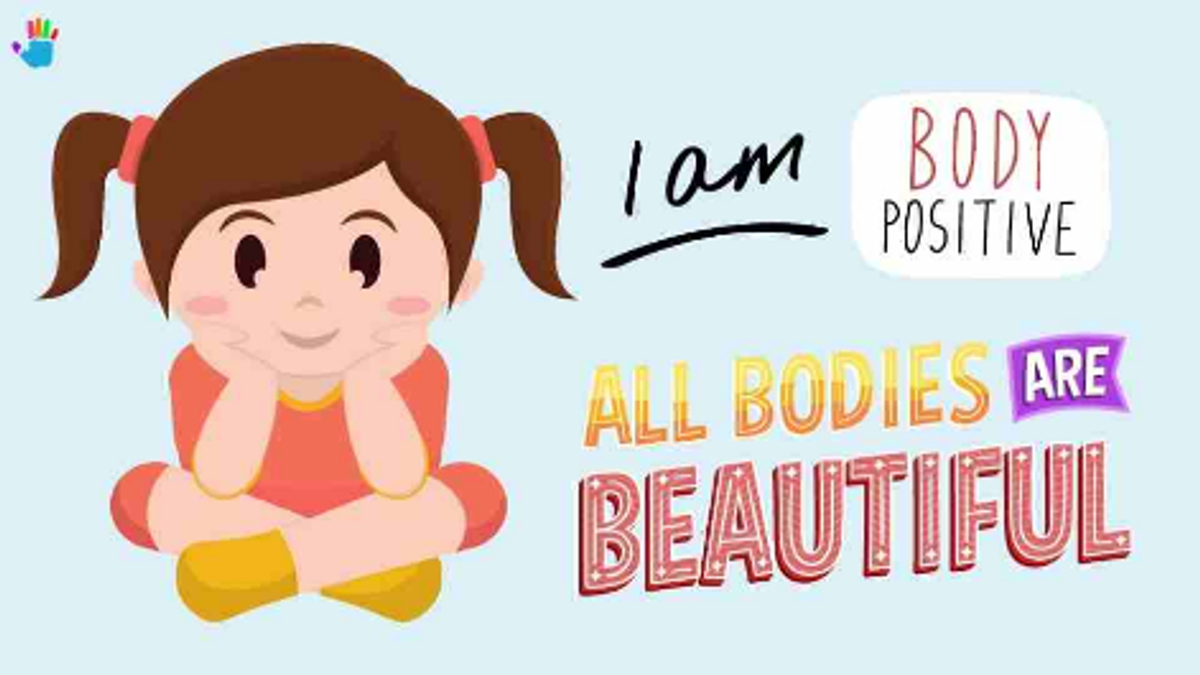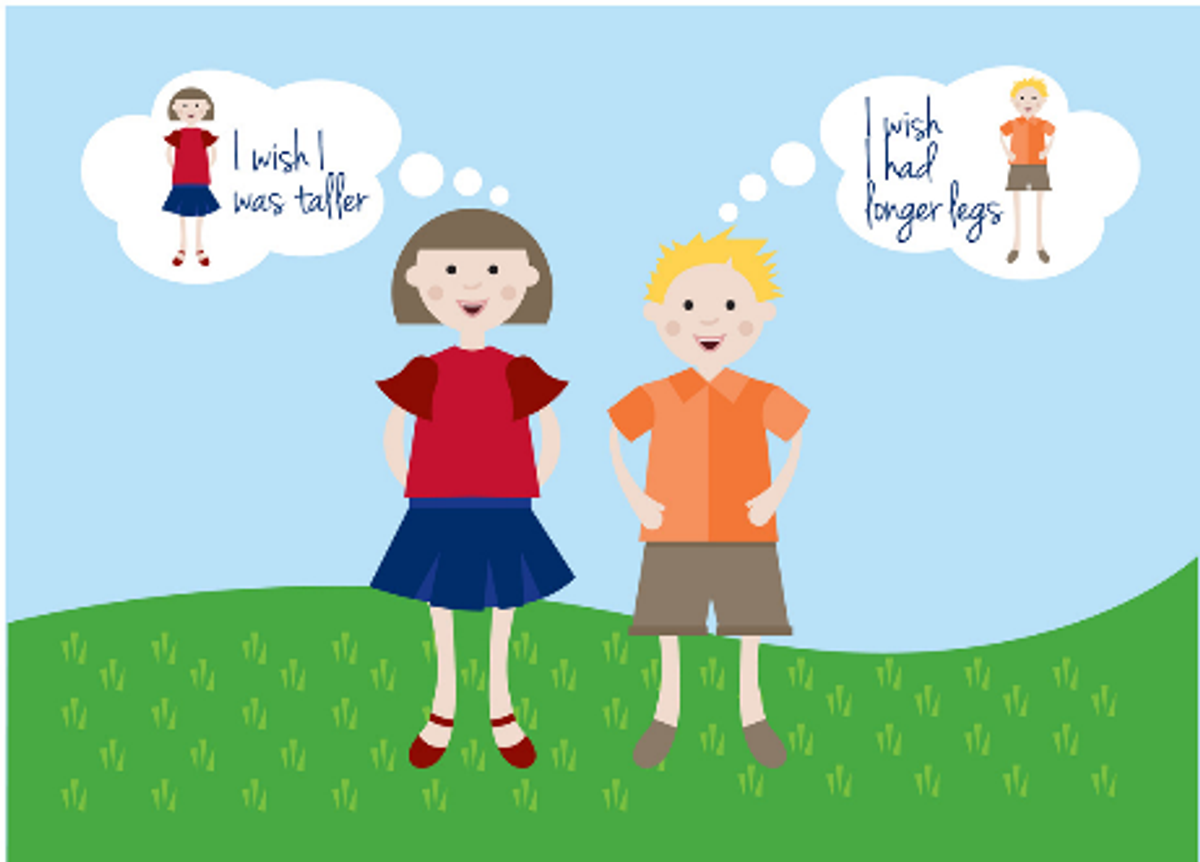Positive body image is increasingly becoming a concern for primary school age children. Possibly the media, both social and entertainment, have had some bearing on this but it is certainly worth increasing our awareness and sensitivity around.
Our body image is formed by the thoughts, feelings, attitudes and beliefs we have about our bodies and how we look. This includes our shape, size, weight, gender identity, and the way our body functions for us. We may feel many different things about our body and appearance: sometimes satisfied/positive, sometimes dissatisfied/negative, sometimes a bit of both, or even neutral. Either way, our body image can influence how we engage with the world. Lots of things can influence body image, such as: Culture, TV /Movies, Magazines, Family, Friends
Having a positive body image means that:
- Most of the time, you see yourself as you really are
- You accept your body and feel comfortable it in – even when it may not match other people's ideals
- Most days you feel confident and happy with the way you look and some days you might wish you could change how you look
- You may feel good about some parts of your body and not as good about others
- You’ve learned to be proud of the way you look and know that no-one is perfect
- You try your best, know that you are enough, and you choose to focus on the positive
Existing evidence about body dissatisfaction highlights the following risk factors:
- Age: Body image starts developing in early childhood and is more intensely shaped in late childhood and adolescence (typically for females this is earlier than in males).
- Key development and experiences such as puberty.
- Gender: Research consistently reports that girls and women experience body dissatisfaction more frequently than boys and men. However, more inclusive research shows that males are also vulnerable to body dissatisfaction at similar rates to females. 40% of people experiencing Binge Eating Disorder are men. Over one third of Australians that experience an eating disorder are men. 40% of people aged 11-17 experiencing disordered eating behaviours are male
- Mental health: People with low self-esteem or other mental health problems, such as anxiety or depression, are more at risk of experiencing body dissatisfaction.
- Personality traits: People with perfectionist tendencies, high achievers, ‘black and white’ thinkers, those who internalise beauty ideals more intensely, and those who frequently compare themselves to others are at higher risk of feeling dissatisfied with their body or appearance.
- Poor role models: Regardless of their actual body type or weight, individuals—particularly children and adolescents—who are exposed to role models who demonstrate unhealthy attitudes and behaviours in relation to body image, eating and exercise are at greater risk of developing body dissatisfaction. These risk factors include exposure to restrictive dieting, excessive and rigid exercise regimes, frequently expressed appearance concerns or strong biases about higher weight.
Poor or negative body image can have negative effects on a person’s physical, psychological and social health. This can include disordered eating, compulsive exercise or over exercising, depression, anxiety and low self-esteem.
What can we do to promote positive body image?
- Parents and teachers as the most influential role models in a child’s life can have a positive impact on a child’s body image.
- Giving children opportunities to appreciate their body for what it can do, rather than what it looks like.
- Reflect on your own relationship with your body – this can be challenging but understanding your own body image can help you to be conscious of the messages you may be providing to your child.
- Encourage your child to talk about what they think and feel about their body – create a safe space for them to share.
- Be aware of the effects of negative body talk around your child, about your own body and the bodies of other people.
- Accept that bodies come in all shapes and sizes and help your child to celebrate body diversity. Avoid placing too much value on physical appearance and your child will too. Instead, try to talk to them about all the different aspects that make up a person, such as personality, skills and interests, and outlook on life.
- Be openly critical of societal messages and images (social media, television, advertising) that promote body or appearance ideals, such as thinness or muscularity. Encourage your child to be social media savvy – to question and challenge Western society’s narrow ideals of beauty or attractiveness.
- Try to avoid labelling foods as ‘good’ or ‘bad‘. Instead, focus on the nourishment that food provides and encourage flexibility in eating patterns. Assigning moral value to foods can create an unhealthy relationship with food and can create feelings of guilt or shame associated with eating certain foods. It can also increase the risk of dieting and disordered eating behaviours.
- Promote eating for nourishment and pleasure.
- Engage in regular physical activity and keep the focus on health, fun and enjoyment.
If you are concerned about your child’s body image, self-esteem, eating behaviours or physical activity behaviours, consult your GP for information and support options.
The following links also provide really useful information and support suggestions.
https://www.betterhealth.vic.gov.au/health/healthyliving/body-image-tips-for-parents
https://butterfly.org.au/
https://www.eatingdisorders.org.au/find-support/eating-disorder-helpline/
SCHOOL PRESENTATION FOR GRADE 5 AND 6 STUDENTS
On Thursday 23rd March the Grade 5 and 6 students will participate in a one hour session with a trained facilitator from The Butterfly Foundation, called Let’s Talk Body Image.
This presentation explores body image and the many factors, both internal and external, that influence it. In particular it aims to build media literacy skills by exploring how and why images are manipulated by different forms of media. It challenges young people to think how their own social media use, now or in the future, can support body confidence in themselves and others. The session also unpacks body comparisons and why appearance teasing/bullying is never OK. The topic is brought to life through real-life experiences shared by our trained facilitators.








